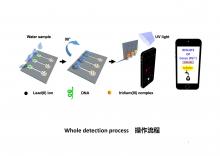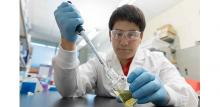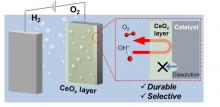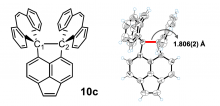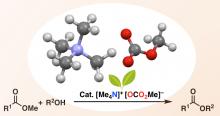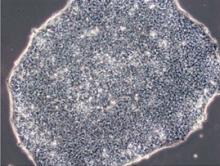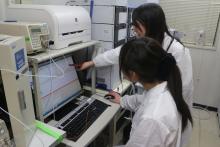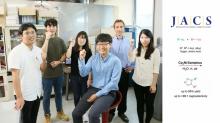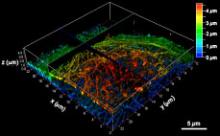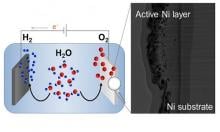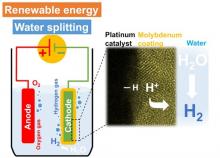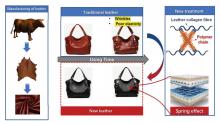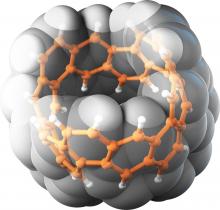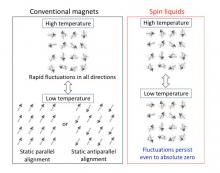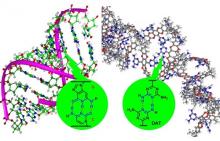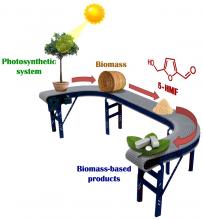Chemistry
News
24 May 2018
A team of researchers, affiliated with South Korea's Ulsan National Institute of Science and Technology (UNIST) has succeeded in developing new air purification technology to eradicate airborne viruses.
15 May 2018
HKBU's award-winning portable device can quickly and accurately detect lead contamination in water.
15 May 2018
Protein analysis could lead to new advances in DNA sequencing technologies.
13 May 2018
Radioactive materials could soon be detected from up to a few hundred metres away.
18 Apr 2018
A porous cerium-based coating boosts the durability of oxygen-forming catalysts while maintaining their inherent water-splitting activity.
08 Mar 2018
A stable organic compound has been synthesized with a record length for the bond between its carbon atoms, exceeding the assumed limit.
06 Mar 2018
Nagoya University researchers produce valuable esters in high yield using environment-friendly catalyst.
05 Mar 2018
A new combination of chemical compounds could lead the way to more cost-effective stem cell cultures.
15 Jan 2018
A new method helps clarify how canola and other edible oils deteriorate, providing valuable insight for prevention.
01 Jan 2018
Synchrotron study reveals oxygen’s influence on the chemistry that surrounds us.
25 Sep 2017
South Korea's Ulsan National Institute of Science and Technology (UNIST) has presented a new way to advance the click chemistry.
17 Aug 2017
~ A powerful tool for 3D and multicolor STED imaging of cellular ultrastructure ~
17 Jul 2017
South Korea's Ulsan National Institute of Science and Technology has introduced new low cost, high efficiency hydrocarbon fuel cells.
02 Jul 2017
A technique to create a material for cost-effective water electrolysis uses a simple chemical method for preparing nickel-based anodes to improve the oxygen-evolution reaction. Efficiency gains like this one developed by KAUST are important in evolving renewable energy.
06 Jun 2017
A coating of molybdenum improves the efficiency of catalysts for producing hydrogen.
23 May 2017
A cross-linkable spring-like polymer finishing agent inserted into calfskin leather for high elastic recovery performance.

23 May 2017
Tungsten and titanium compounds join forces to turn a common alkane into other hydrocarbons.
11 May 2017
Chemists have tried to synthesize carbon nanobelts for more than 60 years, but none have succeeded until now. A team at Nagoya University reported the first organic synthesis of a carbon nanobelt in Science. Carbon nanobelts are expected to serve as a useful template for building carbon nanotubes and open a new field of nanocarbon science.
09 May 2017
Diseased rice seeds treated with atmospheric plasma show significant improvement and growth, offering a potential tool to protect rice crops from fungus and blight.
27 Apr 2017
Fuel such as petrol is made up of hydrocarbons - a family of molecules consisting entirely of carbon and hydrogen. Pigment and dye, coal and tar are made up of hydrocarbons too.

25 Apr 2017
Template modification could speed up the fabrication of sensing substrates and other novel structures.
16 Apr 2017
Stable and recyclable materials synthesized using intrinsically porous polymers selectively retain CO2 from exhaust and natural gas.
14 Apr 2017
Synthesizing life-saving pharmaceuticals from natural biomass can be more cost-efficient than traditional methods and produces fewer toxic byproducts.
Events
Sorry, nothing coming up for this discipline
Researchers
Sorry, nothing coming up for this discipline
Giants in history
Sorry, nothing coming up for this discipline




